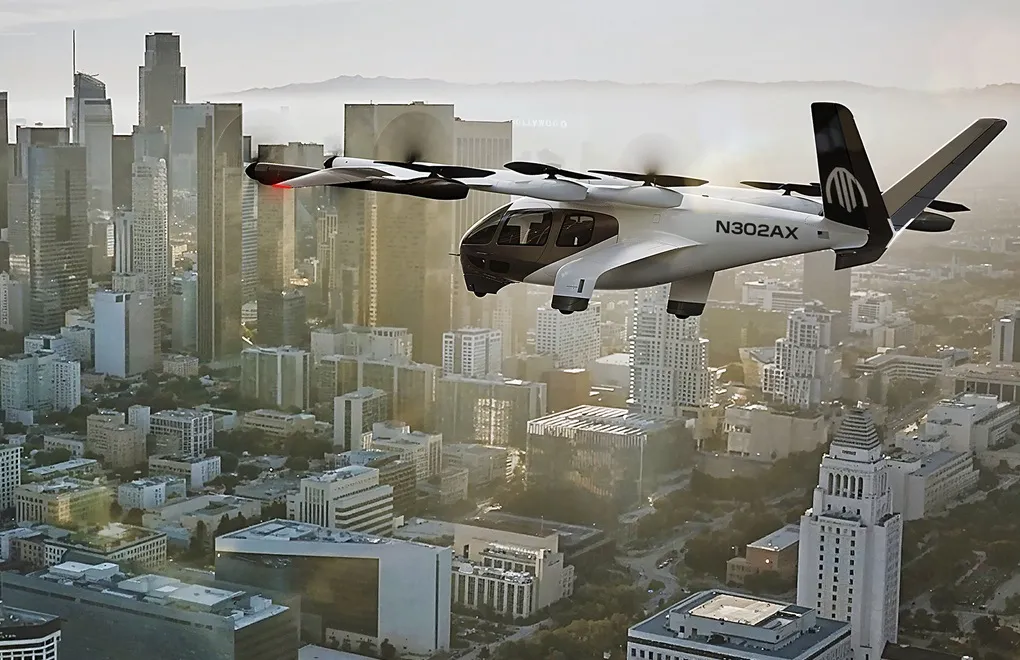
The US city of Los Angeles could have an electric airplane air mobility network as soon as 2026, according to Archer Aviation.
The goal is for passengers to be able to go to a nearby vertiport - or vertical take-off and landing location - and then fly 10-20 minutes in Archer’s electric Midnight aircraft to a destination served by Archer.
Midnight, Archer’s piloted, four-passenger aircraft travelling up to 240kph (150mph) with four passengers and luggage will play a crucial role in this network. The electric Midnight aircraft is designed for back-to-back flights of 30-80km (20-50 miles) with minimal charge time in between.
Archer’s planned network includes vertiports at key locations such as Los Angeles International Airport (LAX), Orange County, Santa Monica, Hollywood Burbank, Long Beach and Van Nuys.
As part of its network planning, Archer is coordinating with the American football club Los Angeles Rams to locate a vertiport at the 100-acre Woodland Hills practice field and at Hollywood Park, a 300-acre sports and entertainment destination being developed by the team’s owner and which includes the Rams’ official stadium.
The University of Southern California is also engaged to be part of Archer’s planned LA network. Over the next two years, Archer and the university will develop plans for converting the university’s heliports for Midnight and other vertical take-off and landing aircraft.
“This is a big moment for Archer,” said Adam Goldstein, chief executive of Archer. “Establishing our LA network ahead of the global events that are coming to the region over the next four years is a milestone that will put Midnight on display for the whole world to see. LA is known for its horrendous traffic. Our goal is to offer a safer, faster and sustainable alternative travel option.”
Archer recently announced similar plans for the San Francisco Bay Area as well as relationships with Southwest Airlines and United Airlines.
It also comes after a successful transition flight, certification to begin operating as a commercial airline and rapid progress on its manufacturing plant in Covington in the US state of Georgia.








